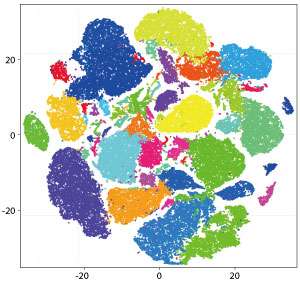Intuitive and efficient solution to eliminate anomalies in immunological studies

A*STAR researchers have developed a new bioinformatics tool called flowAI, which provides a more objective, efficient and intuitive solution to the quality control of data acquired via a common biological technique called flow cytometry.
Flow cytometry is the first-choice technology in immunology and other biological fields to characterize physical and functional properties of cells. Beyond separating cells according to their size and granularity, flow cytometry can distinguish specific cells by the proteins present on their membrane, which are recognized by antibodies labeled with different fluorescence colors.
Although this technique allows up to 20 parameters to be analyzed simultaneously, its inefficient data analysis is often performed manually, which is time-consuming and relies on high expertise and subjective interpretation.
"Being actively involved in several activities of the International Society for the Advancement of Cytometry (ISAC), we have realized that one growing demand is to improve the automatic analysis of flow cytometry data," explains Anis Larbi, principal investigator at the Singapore Immunology Network. "We believe that high-quality data lead to more accurate results and better downstream computational analyses."
FlowAI is a software package, which uses the statistical language known as R, and is available on the open source project Bioconductor. It allows users to discard poor-quality data either automatically via an algorithm or manually using a graphical user interface. FlowAI eliminates anomalies caused by debris, air intrusion in the fluidic system, technical issues, voltage instability and so on, which create abrupt changes in the speed of the fluid, instability of signal acquisition over time and data outliers. The analysis generates a report that indicates the percentage of cells that did not pass the quality checks and graphs showing where the anomalies were detected.
A*STAR scientists tested FlowAI with 4,469 flow cytometry files from 11 different datasets and also compared the FlowAI automatic method with other software packages used for flow cytometry data analysis and quality control, namely flowJo and flowClean. Among these, FlowAI was the fastest, the most stringent toward anomalies and the most intuitive to use.
"Scientists who want to look deeper into the cellular complexity often need to distinguish extremely rare cells, which may be lost with an unreliable quality control. We expect that flowAI will help scientists to remove background noise and achieve a more accurate detection of these rare cells and an easier characterization of the source of ambiguous results. We recommend flow cytometry users to try flowAI and let us know what they think," suggests Larbi.
More information: Gianni Monaco et al. flowAI: automatic and interactive anomaly discerning tools for flow cytometry data, Bioinformatics (2016). DOI: 10.1093/bioinformatics/btw191
Journal information: Bioinformatics


















